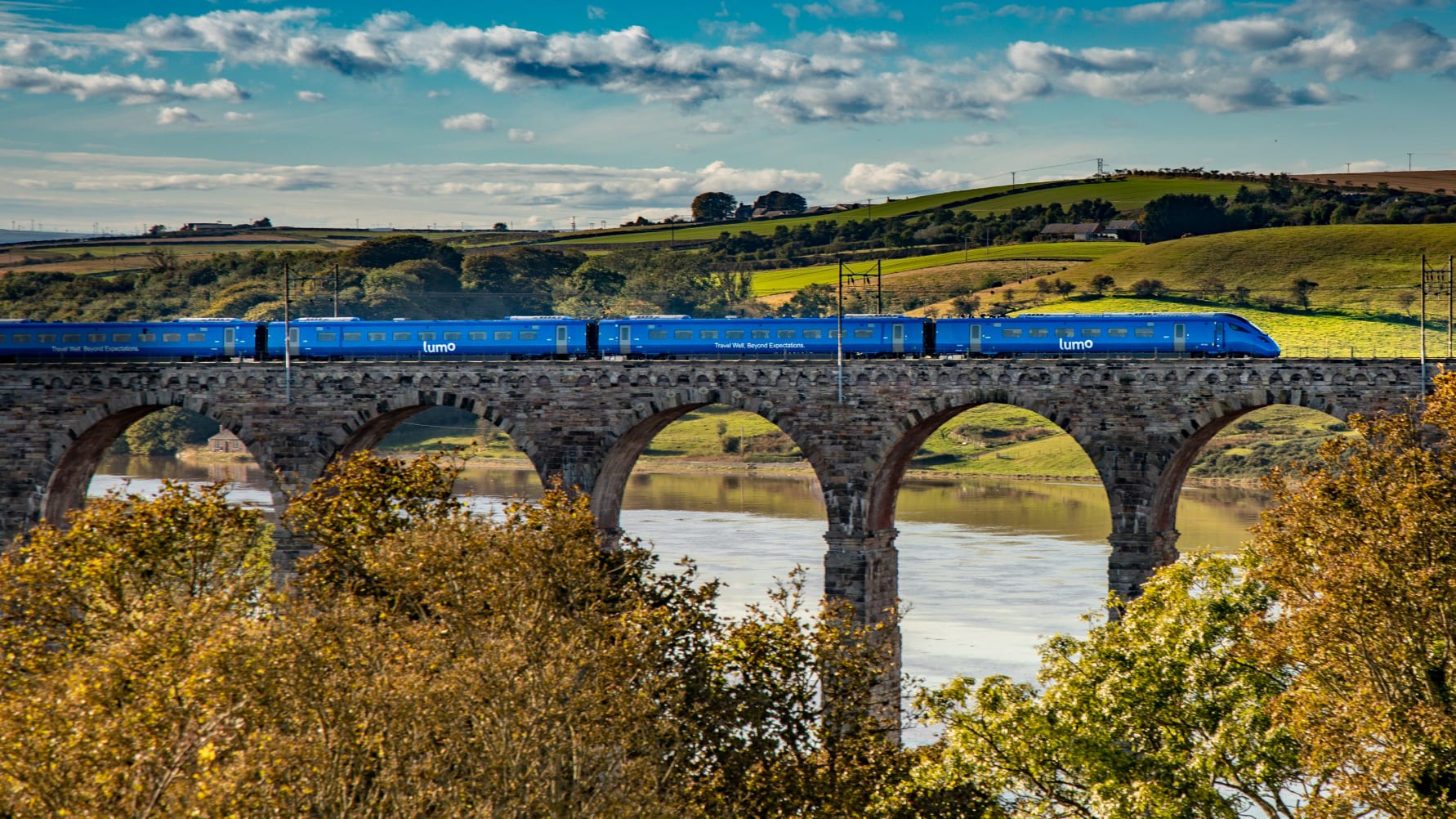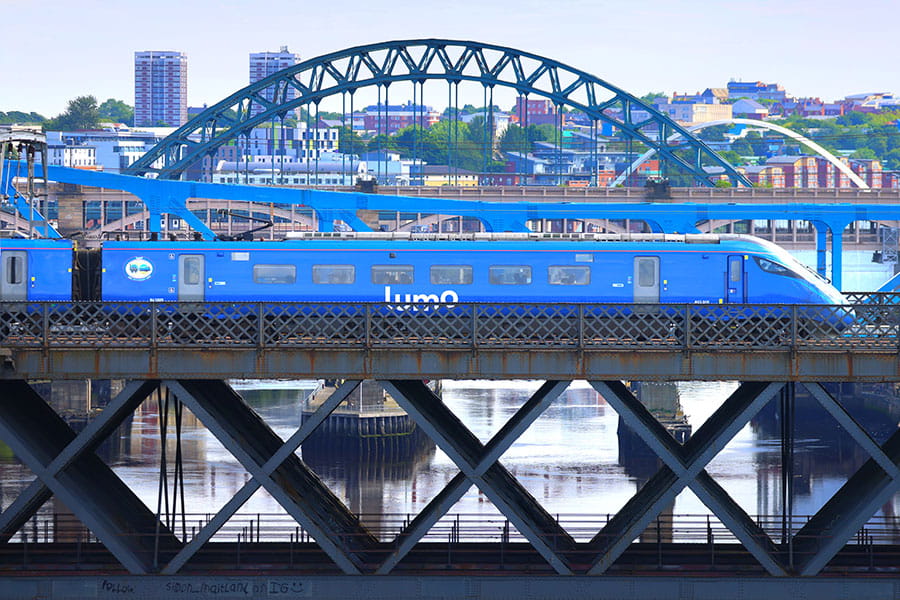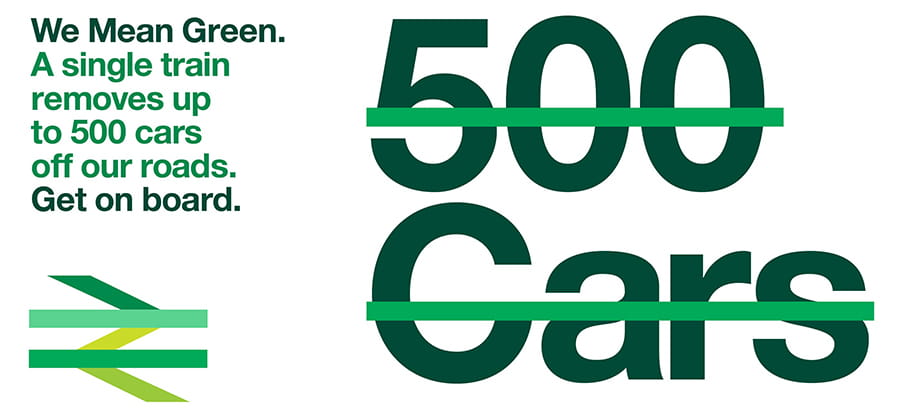Find out more out Britain’s first 100% electric train fleet.
Travelling with Lumo vs Plane*
*data shows percentage Co2e saved travelling by train when compared with plane.
CO2e (USED/SAVED kg/%) ON YOUR JOURNEY
| Journey | Distance (km) | How many times more CO2eused (kg) vs. rail? | CO2e saved (%) | ||
|---|---|---|---|---|---|
| Car | Plane | Car | Plane | ||
| London King's Cross to Stevenage | 44.3 | x23 | - | 96% | - |
| London Kings Cross to Newcastle | 431.7 | x21 | x27 | 95% | 96% |
| London Kings Cross to Morpeth | 458.5 | x21 | x25 | 95% | 96% |
| London King's Cross to Edinburgh | 631.6 | x21 | x22 | 95% | 96% |
| Stevenage (Luton Airport) to Newcastle | 387.4 | x19 | - | 95% | - |
| Stevenage (Luton Airport) to Morpeth | 414.1 | x20 | - | 95% | - |
| Stevenage (Luton Airport) to Edinburgh | 587.3 | x20 | x23 | 95% | 96% |
| Newcastle to Morpeth | 26.7 | x24 | - | 96% | - |
| Newcastle to Edinburgh | 199.9 | x20 | - | 95% | - |
| Morpeth to Edinburgh | 173.2 | x20 | - | 95% | - |
All data was derived for both FirstGroup Open Access Operators, Lumo and Hull Trains.
Find more information here
blue is the new green
We are more than just a blue exterior, we are green at heart. We also want to make sure that you can travel across the east coast and still enjoy the beautiful scenery. That's why in just one single Lumo journey you could save up to 7 trees** travelling the distance from London King's Cross to Aberdeen.
If just 15% of passengers who flew from London Heathrow to Edinburgh travelled with Lumo instead, in just one year we could save 25,600 tonnes of CO2e. That's the equivalent of one million trees.**

**data shows equivalent annual Co2e saved travelling by train when compared with plane, sequestered by No of Trees.
how can you travel sustainably with Lumo?


digital tickets
Go green, go digital, go convenient with Lumo train e-tickets.
We acknowledge and commit to supporting the rail industry’s role in decarbonising transport and helping meet the UK and Scottish government’s Net Zero targets. Please see our Environmental Policy for more information.
FAQs
Scope 1 emissions (direct emissions) are direct greenhouse gas emissions that result from sources owned or controlled by an organization, for example, fossil fuel combustion from company-owned vehicles.
Scope 2 emissions (indirect emissions) relate to purchased electricity, heat and steam as a result of energy consumption (e.g. power station in the case of electricity generation).
Scope 3 emissions (other indirect emissions) relate to indirect emissions from 3rd parties such as the production and lifecycle of purchased goods, for example products and services onboard.



.png)

.png?h=800&w=1280&la=en&hash=245057BDE0753DF32BA641EF232FAB3E)
